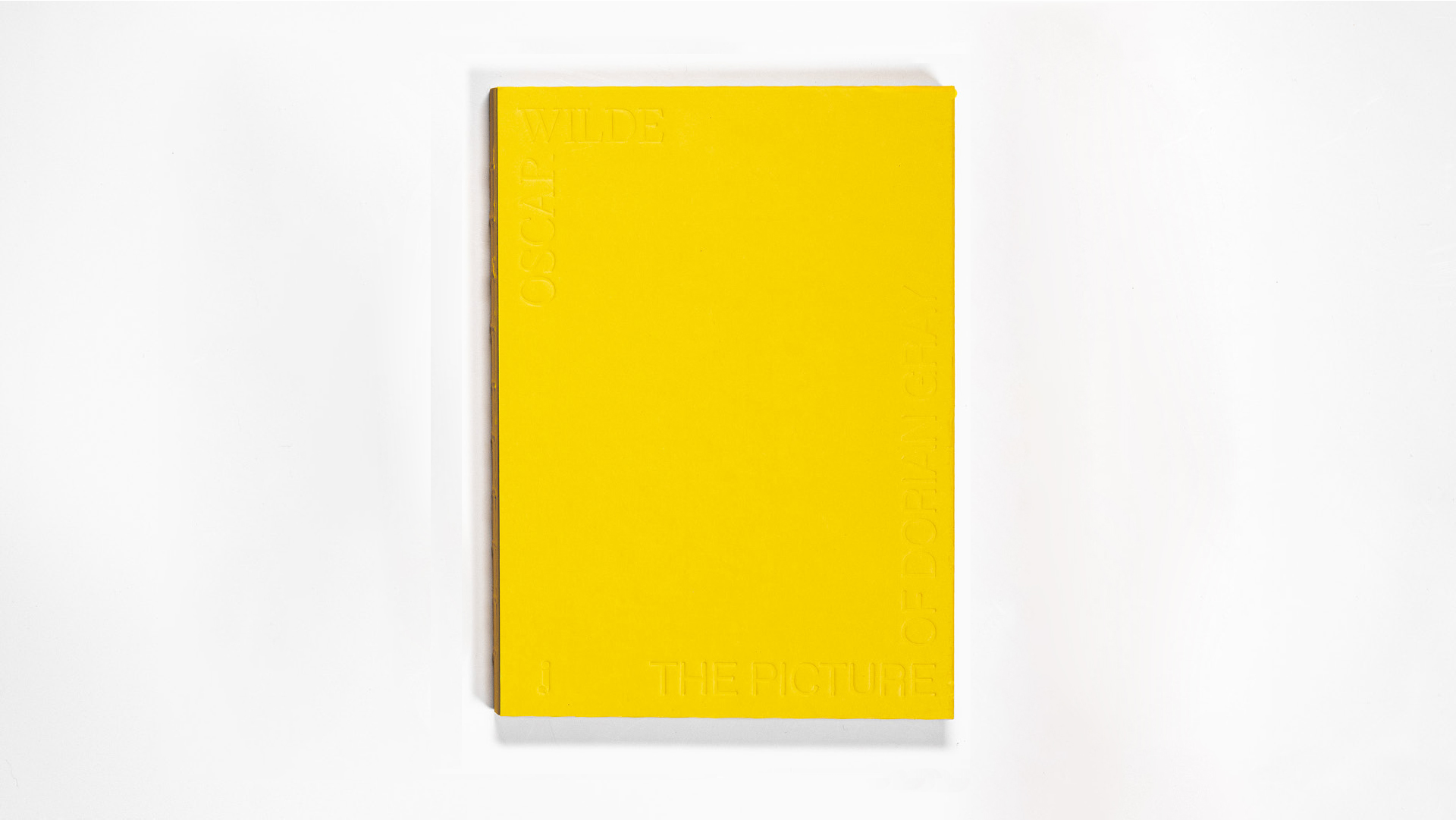
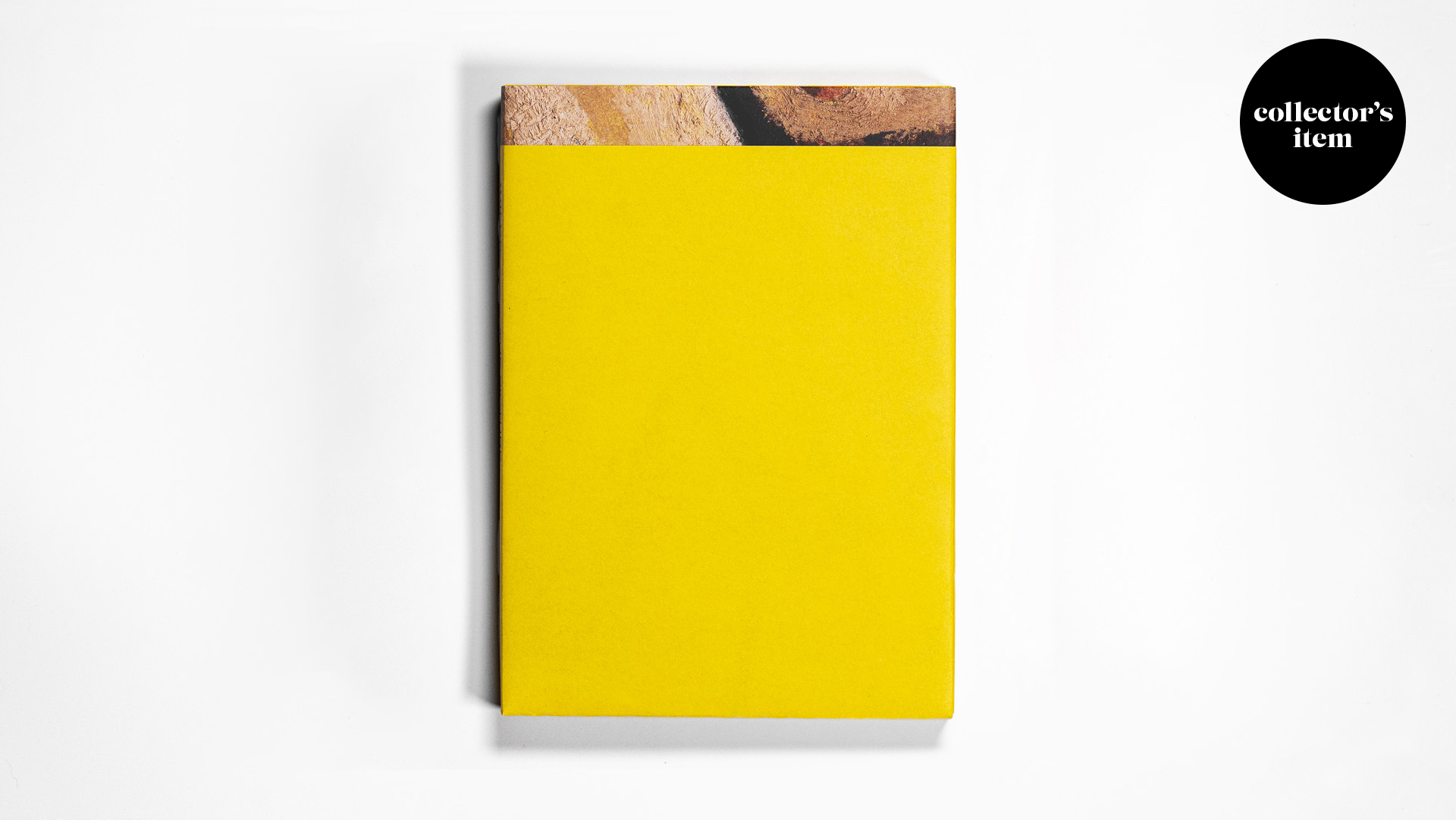
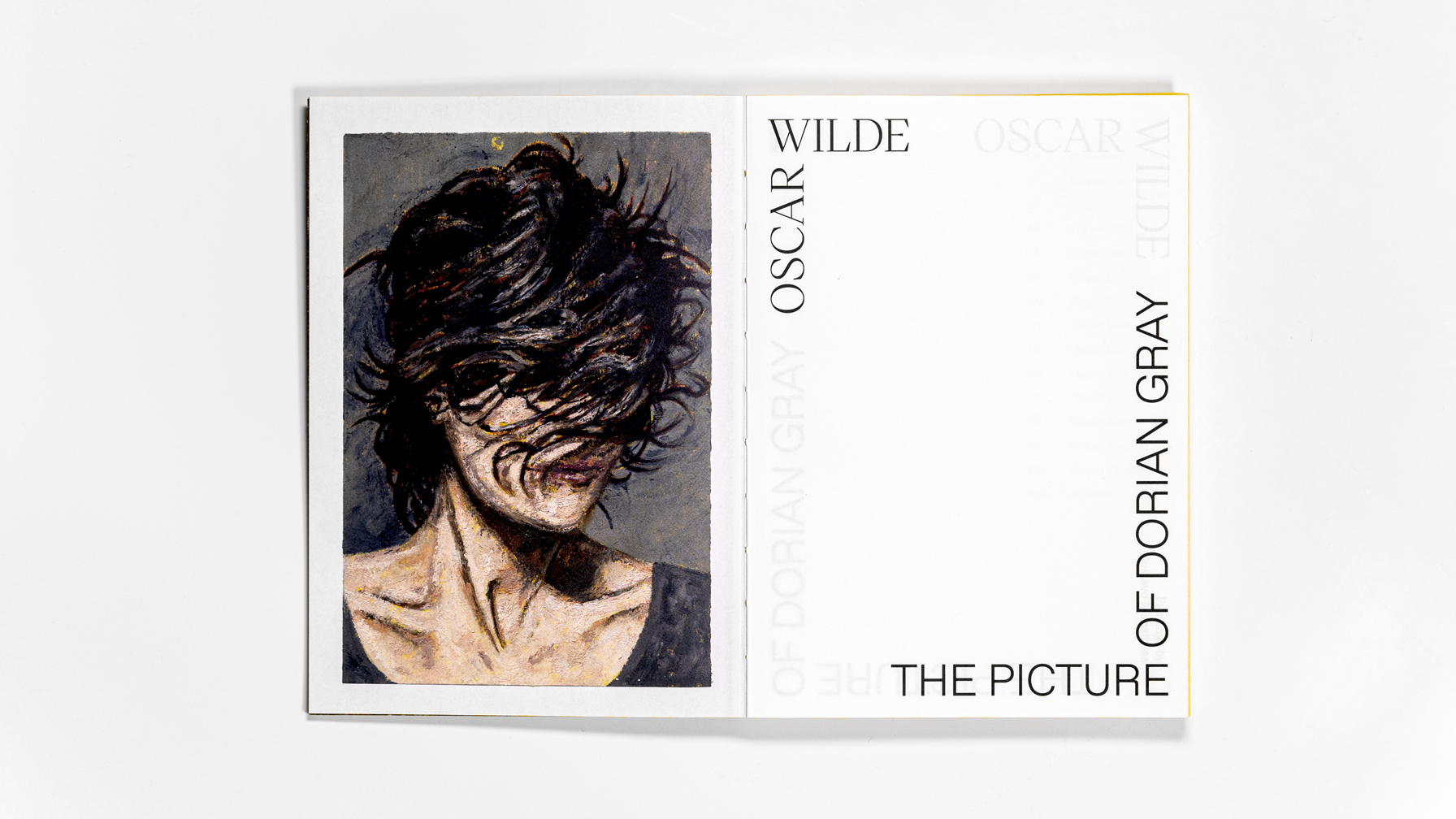
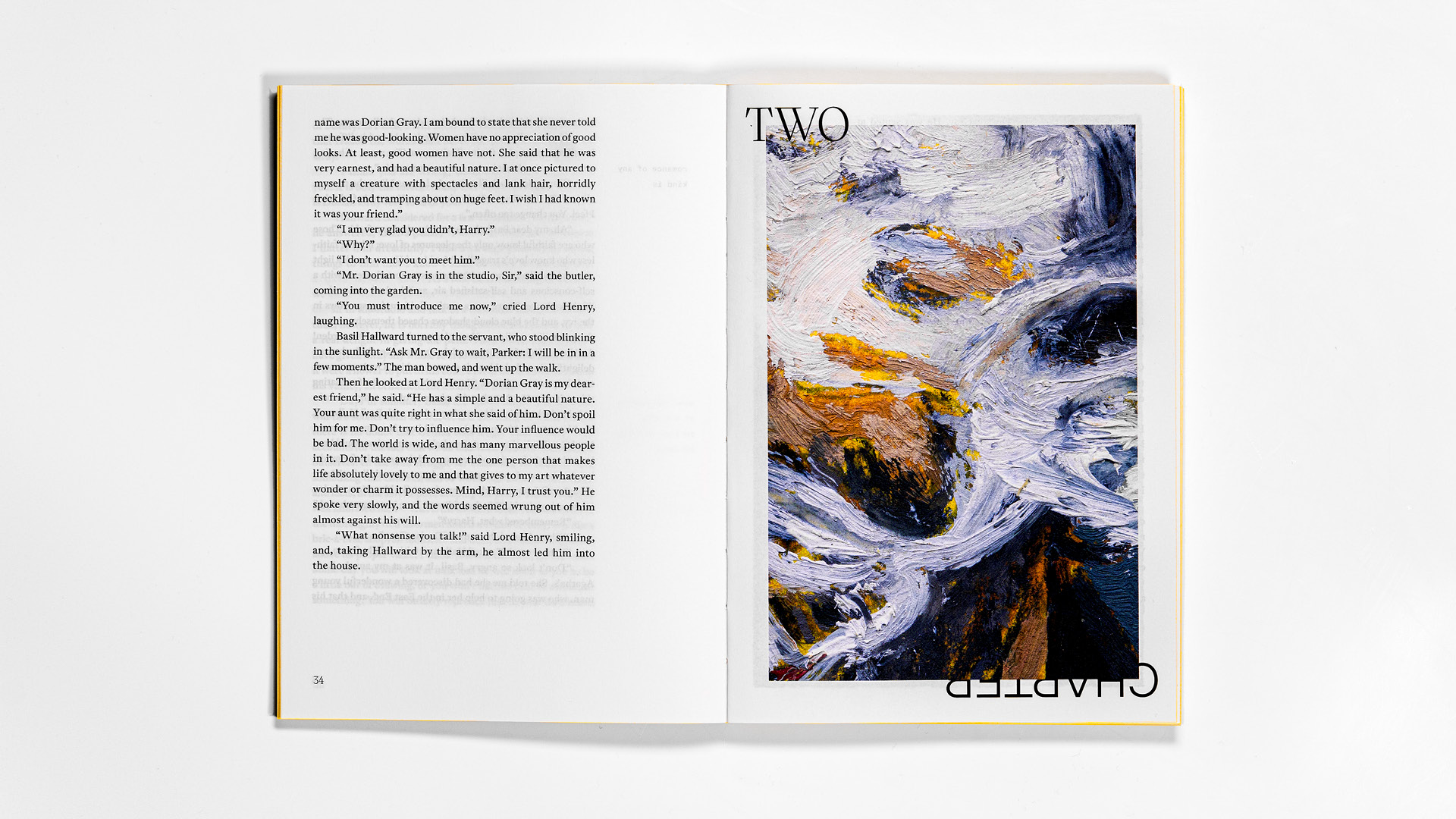
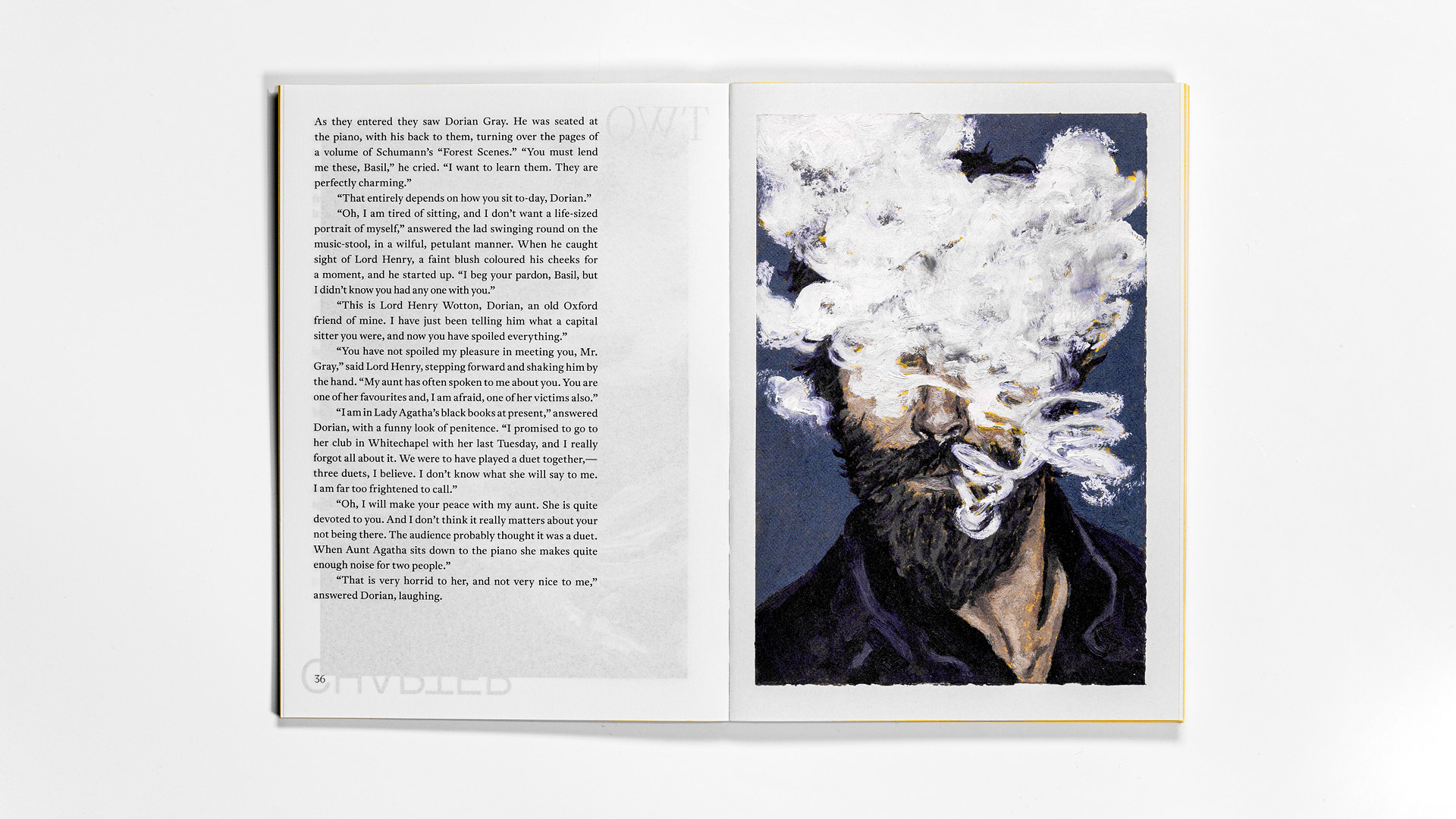
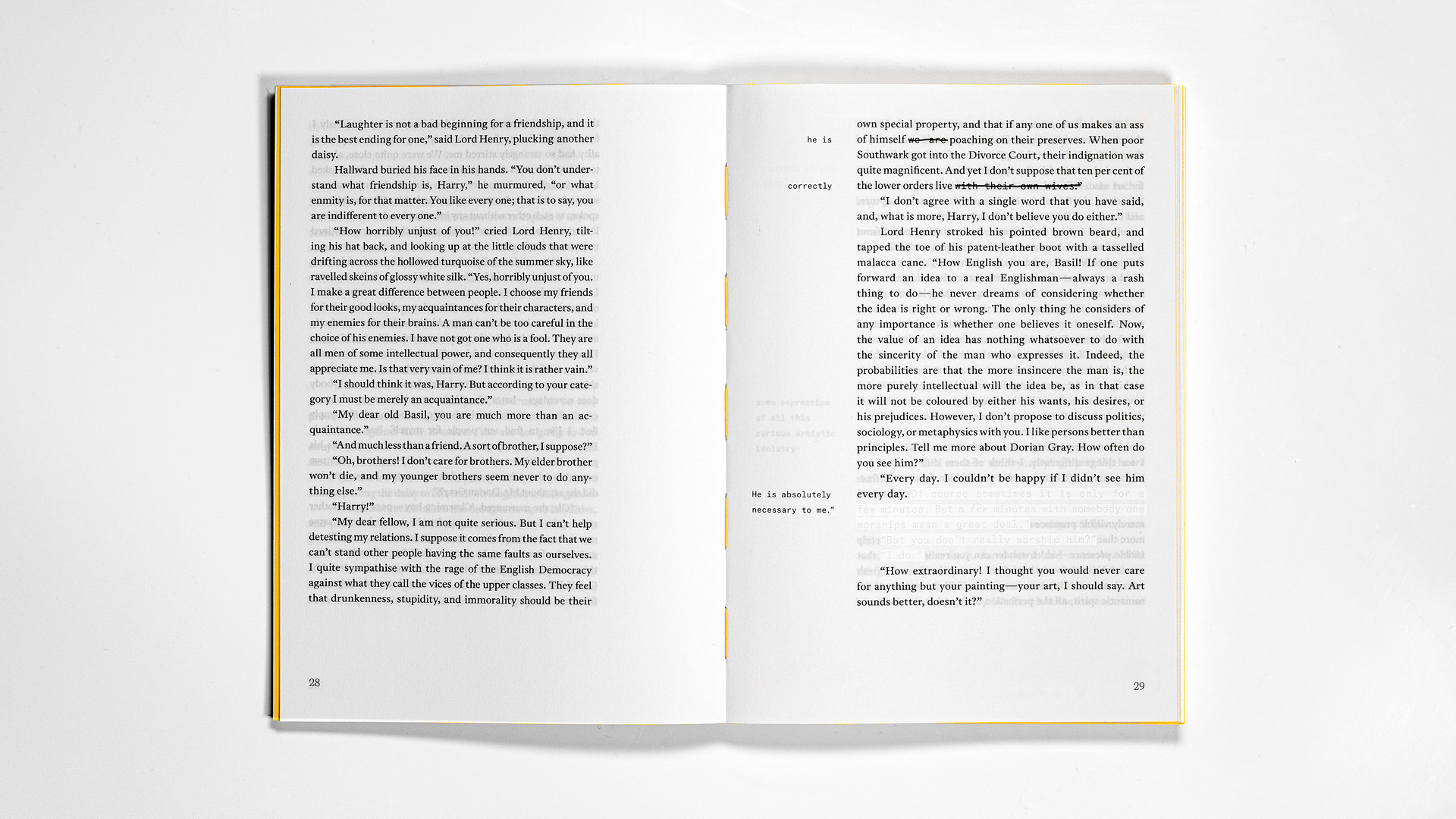
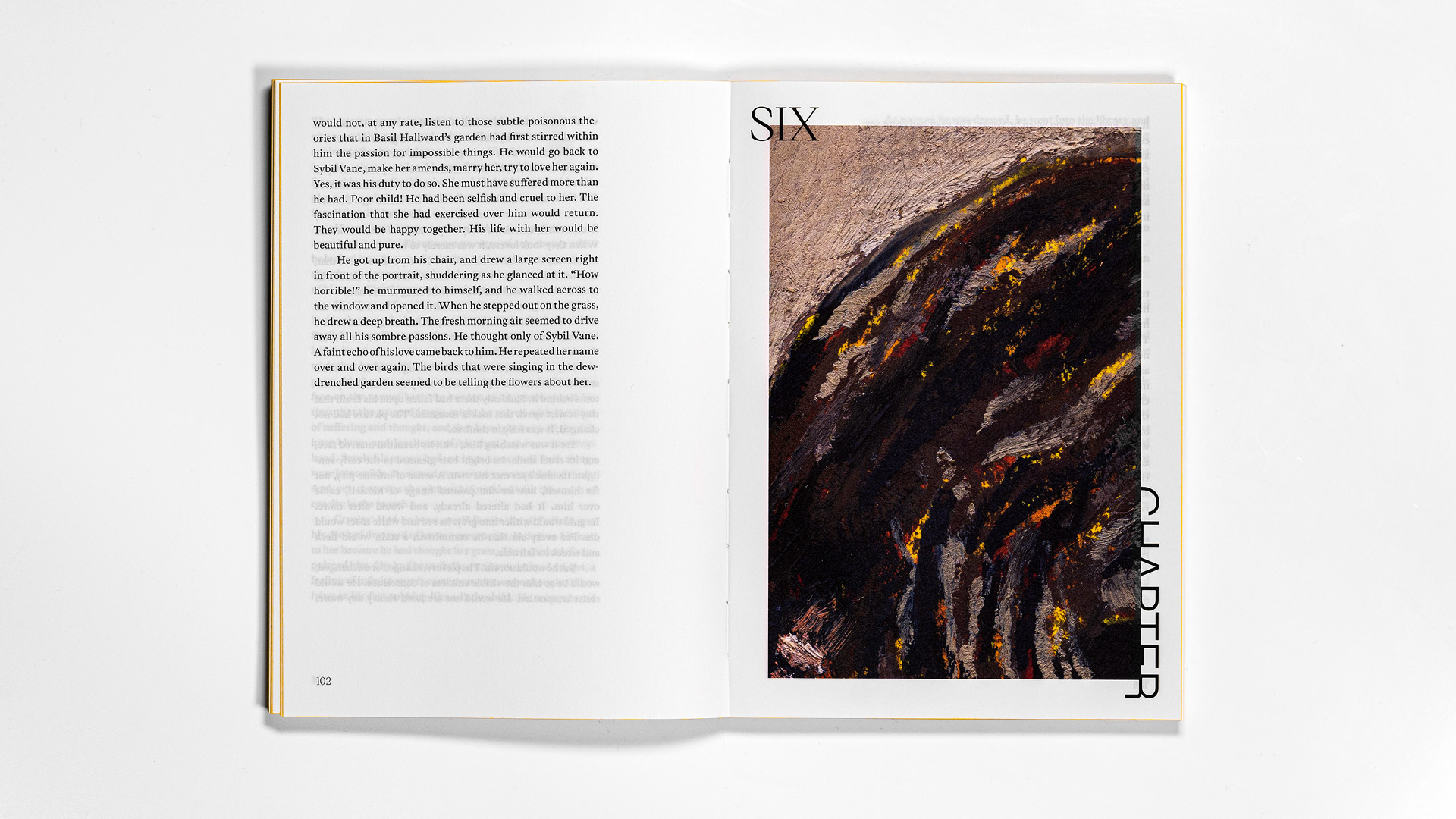
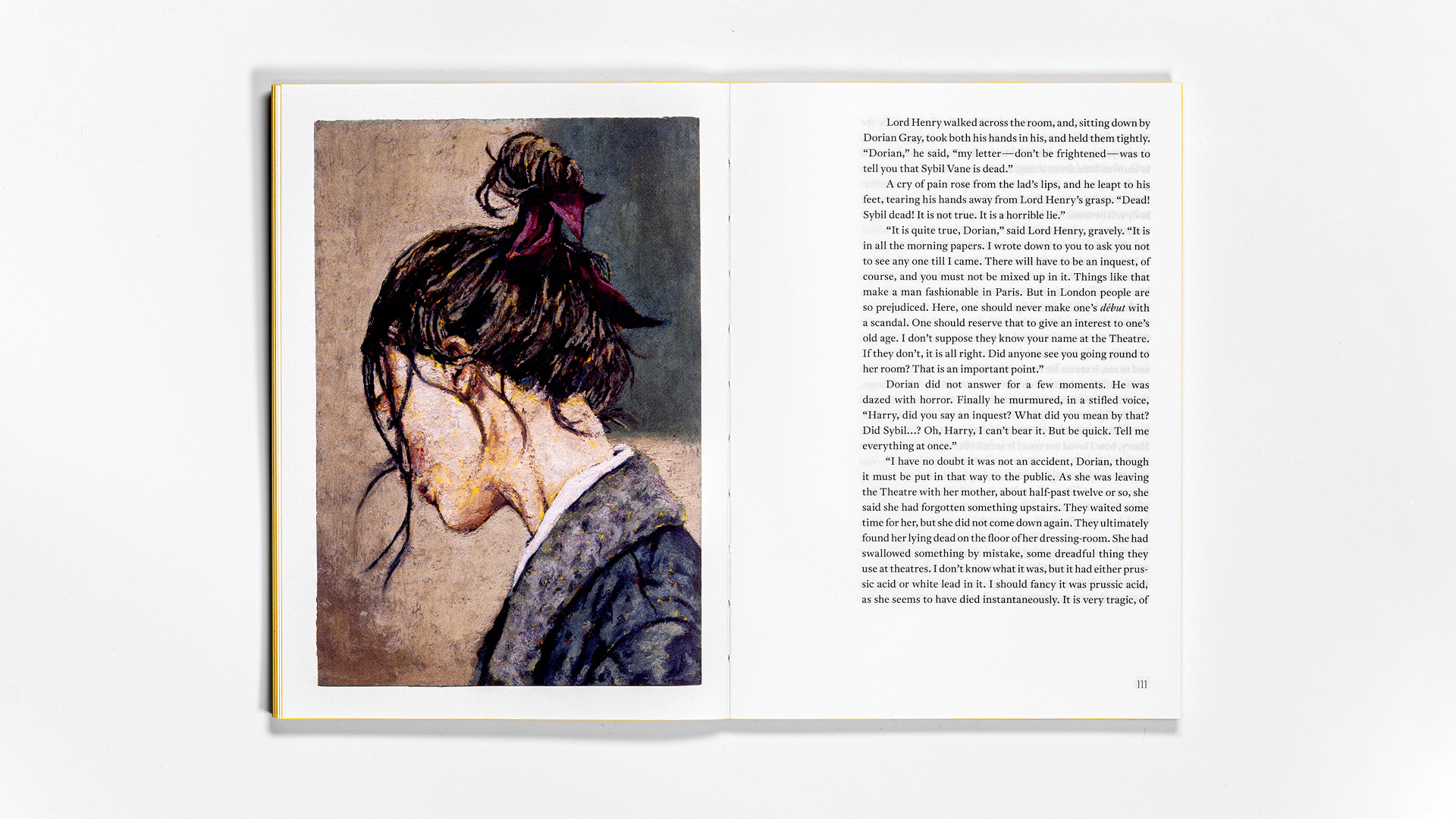
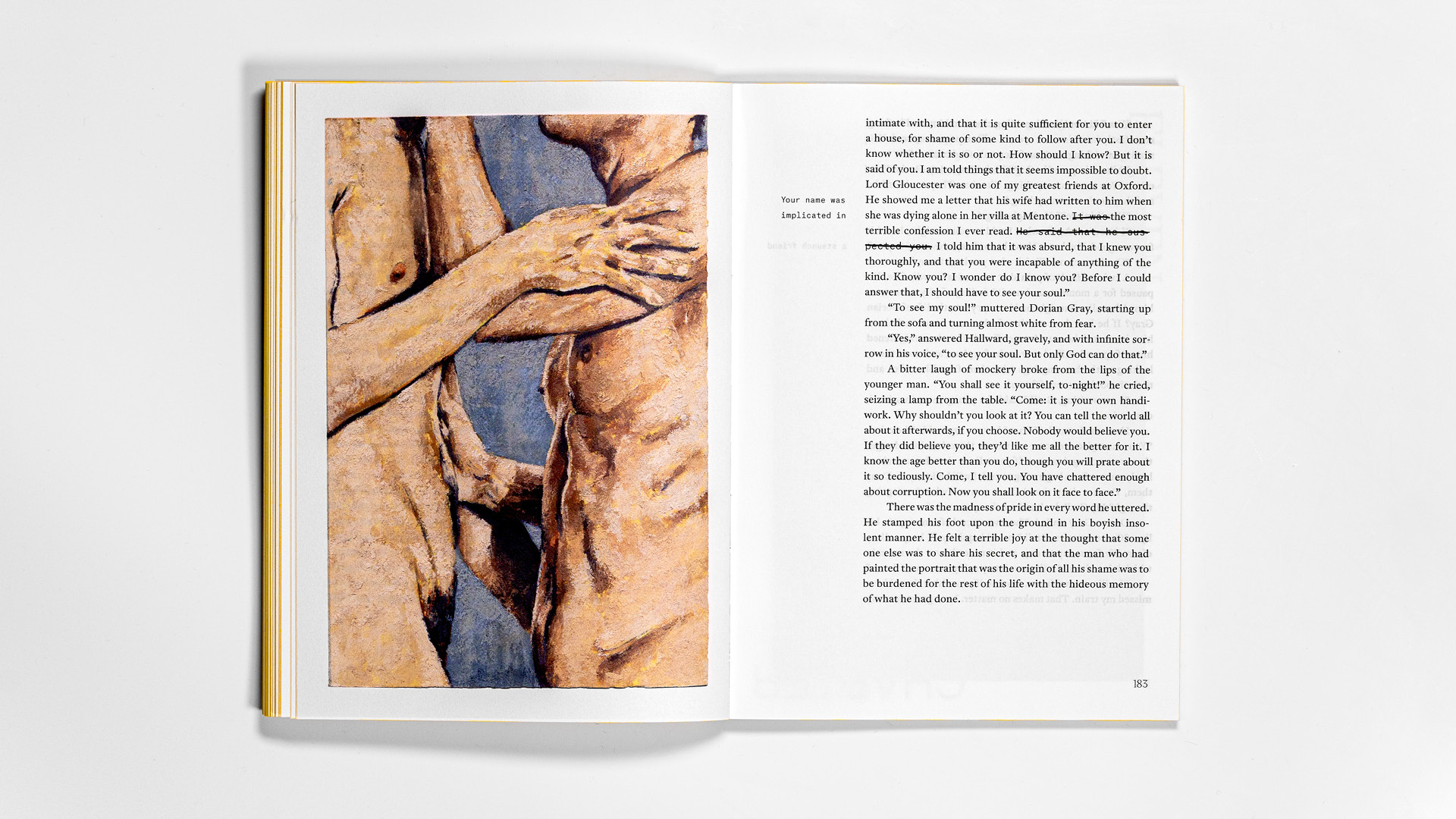
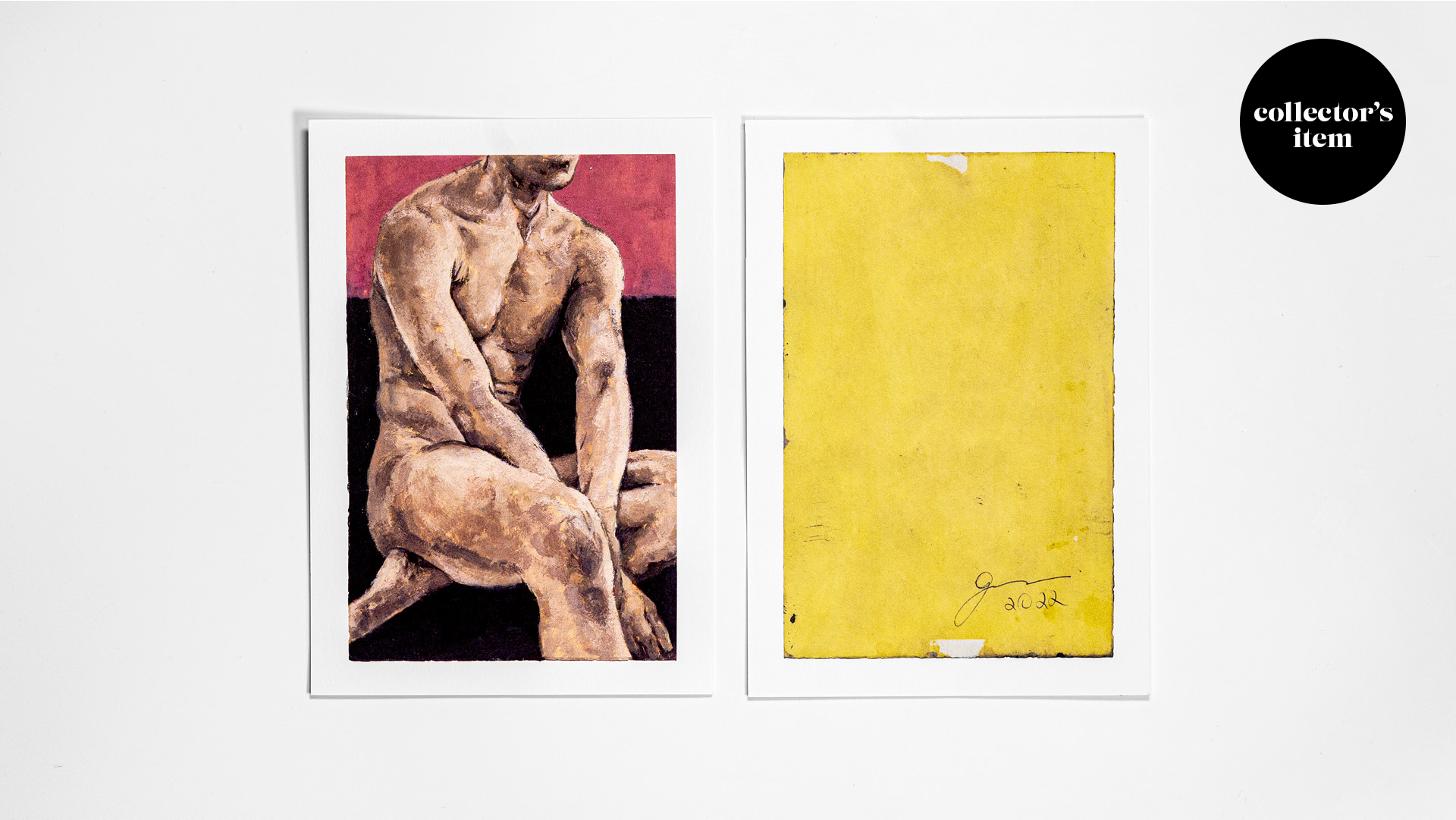
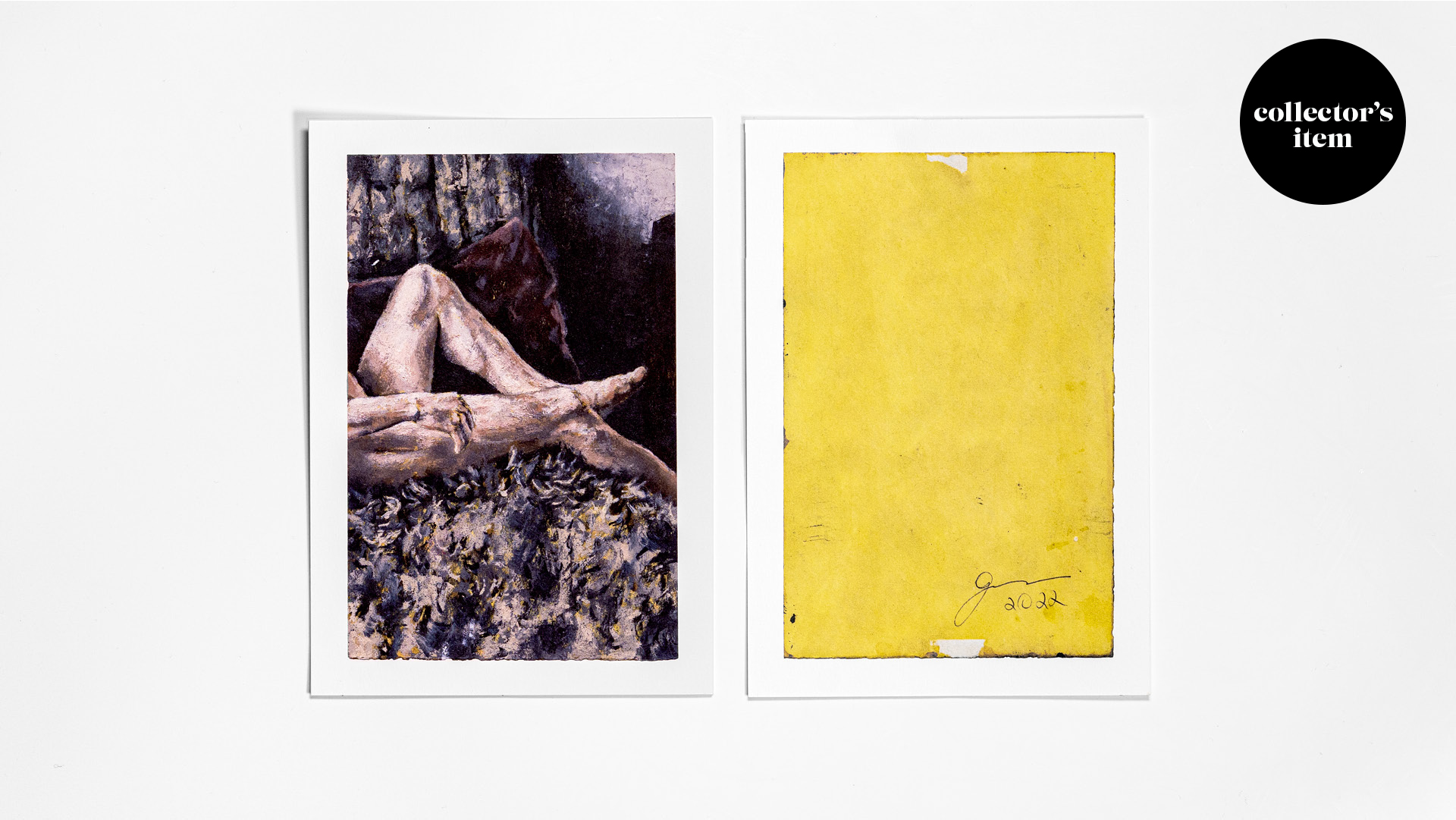
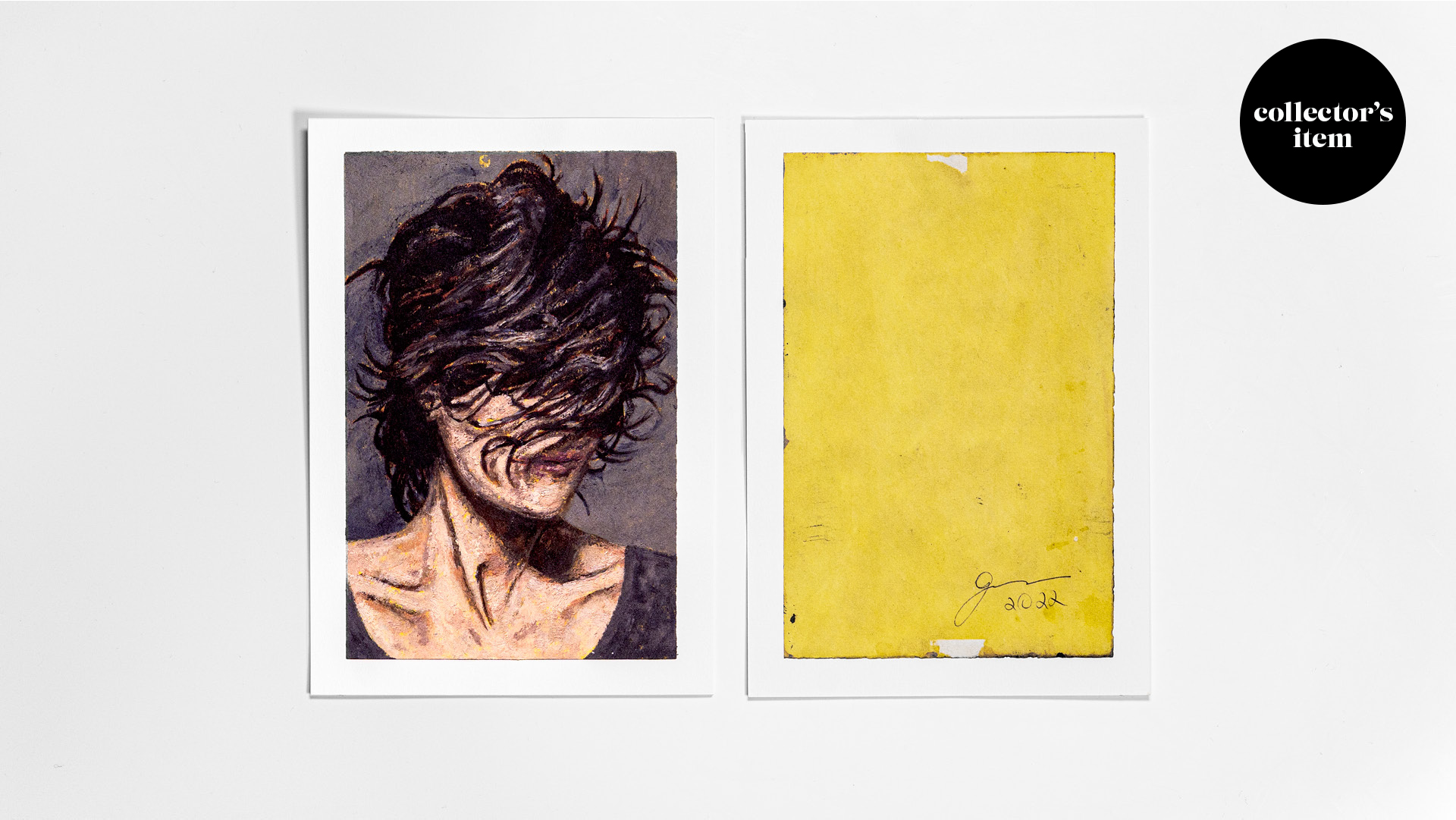
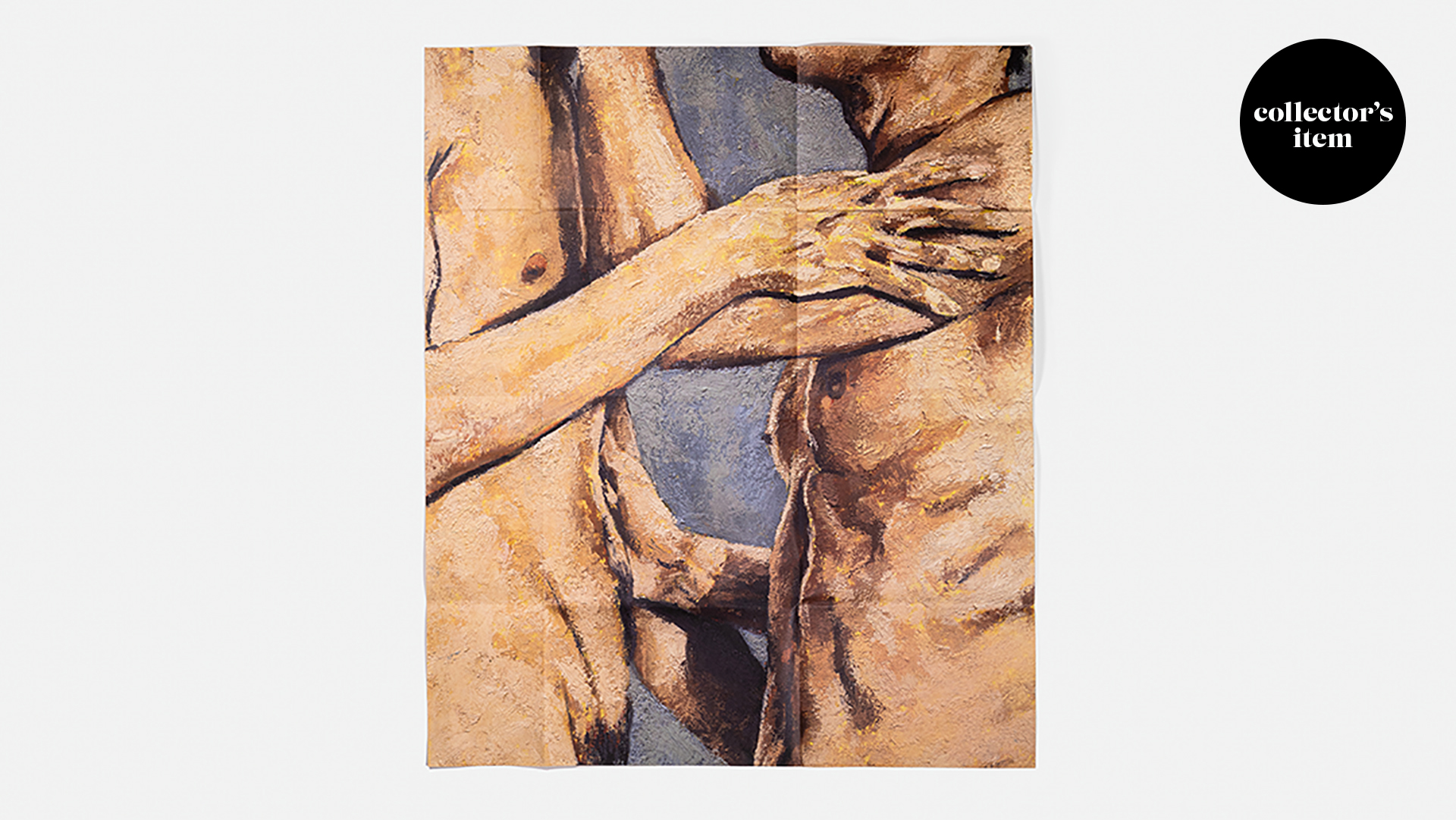
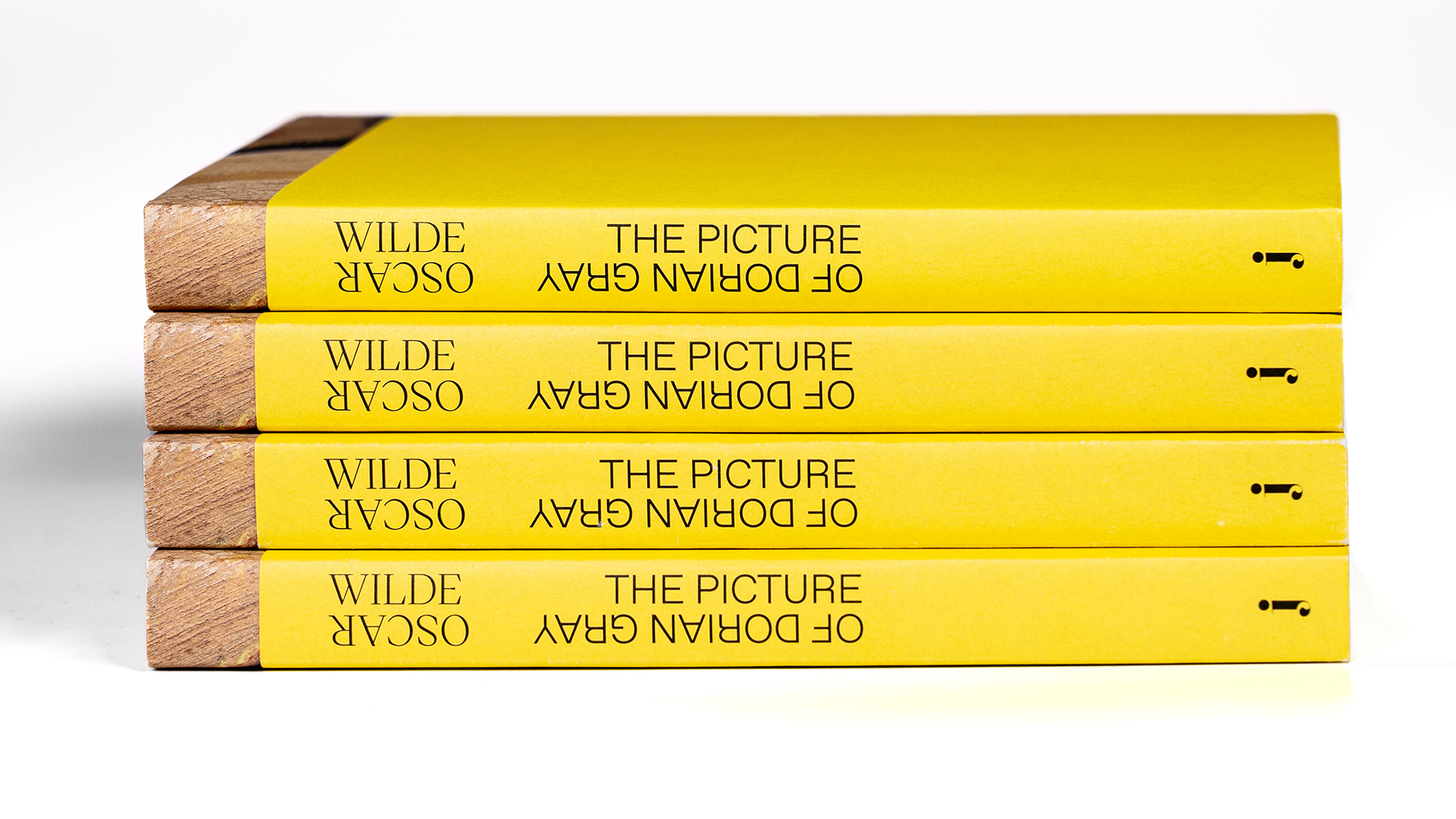

the
picture
of
dorian
gray
Uncensored, Unfiltered, and Illustrated
Oscar Wilde
Illustrated by Gustavo Magalhães
Experience Oscar Wilde’s most famous work as he originally intended it. Wilde’s original 1889 typescript restores the artistic vision that shocked readers on both sides of the Atlantic. Seventeen original oil canvasses by Gustavo Magalhães beautifully illustrate this remarkable restoration of Wilde’s words and spirit.
collector's edition
Limited edition of 1000 hand-numbered copies; printed using a sophisticated 5-color process on Munken Pure and Munken Print White paper; bound in a hardcover with an exposed, sewn spine, adorned with hand-painted accents on all four edges. Features one exclusive Fine Art print of one of the masterpieces by the visual artist and painter Gustavo Magalhães, created exclusively for these editions; accompanied by a dust jacket that unfolds into a remarkable 619x520mm poster; closed format measuring 158x220mm.
£ 268
artist's edition
Limited print run up to 10,000 copies; meticulously crafted with a dynamic 5-color printing process on Coral Book Ivory and Munken Print White paper; bound elegantly in a hardcover with a sewn and exposed spine, adorned with a touch of decadent yellow hand-painting along all four edges; enclosed within a compact format measuring 158x220mm.
£ 149
“
Basil Hallward is what I think I am; Lord Henry is what the world thinks of me Dorian Gray what I would like to be - in another age perhaps.
what is new and special?
To highlight the censorship suffered by the author in two crucial moments of the editorial process (1890-1891), we have opted to graphically indicate not only “when”, but “where” and “how” this censorship took place:

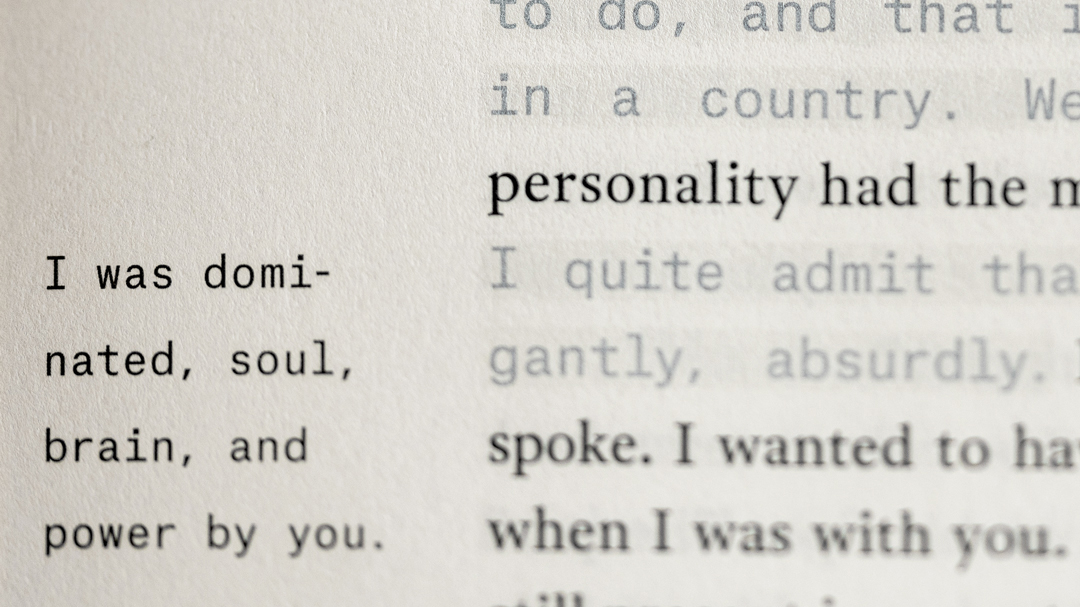


learn more
Oscar Wild originally conceived The Picture of Dorian Gray as a deeply personal meditation on beauty, art, and the primacy of experience over abstract morality. It is both his most famous work and his most intimate, at once a bold statement of Wilde’s philosophy, an acknowledgement of its limitations, and a study of the forces thar constrain and confine us.
Gustavo Magalhães (1998-), is a Visual Artist hailing from Goioerê/PR, who currently resides and works in Curitiba/PR. He holds a degree in Visual Arts Education from FAP/UNESPAR and has been producing in the field of Painting since 2013.
In 2018, he began researching and developing the series "violence" (2018-), with works exhibited at CUBIC 4 (Circuito Universitário da Bienal Internacional de Curitiba) in 2019. In 2022, he received an honourable mention for the work "fome" (2021) at the 5th Visual Arts Salon of Pinhais. Also in 2022, his work "untitled" from the series "violence" (2018-) became part of the museum collection at MAR - Museum of Art of Rio. In 2023, his first solo exhibition called "ATELIÊ ABERTO" took place, transforming the apartment where he lived at the time into an ephemeral exhibition space. Later in the same year, his second solo exhibition, "The Unportrayable," curated by Rafael Rodrigues, was held at Soma Gallery.
Through the appropriation and decontextualization of images and the collection of materials from precarious sources, he creates works that address social issues such as race, identity, and violence, as well as issues inherent to the language of painting.
Index is a design studio shared by creative partners Ana Santiago (São Paulo, BR) and Asad Pervaiz (NYC, US).
Commissioned by Jhambo Ink to design our publications, their innate love of books is complemented by more than 20 years of experience designing for publishers such as Rizzoli, August Editions, Carambaia, Fósforo, Ikrek Edições, Editora Olhares and Todavia.
Their designs reside in the archives of both the Museum of Modern Art (MoMA - New York) and The British Library (London) and have received awards from Art Directors Club, Graphis and the American Institute of Graphic Arts.
